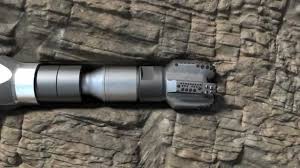In brief, Drill off test is a simple procedure to run to get the best working combination between weight on bit and Drill Bits RPM which give you the best ROP.
Notes To Consider While Running The Test

- Drill off test procedure can help optimize drilling parameters (weight on bit and rotary speed) for maximum penetration rate.
- Run a drill-off test once a new bit has been broken in or when a significantly different formation is penetrated.
- Do not run a drill-off test with a new bit until it has been broken in, to avoid possible bit damage.
- Do not run a drill-off test if the penetration rate is already very high, as this makes a drill-off test difficult to perform.
- Do not run a drill-off test if the formation is very erratic, as the results may then be too scattered to be useful.
- Drill-off tests can be passive or active.
Passive Drill off Test
Passive Drill Off Test Procedure:
- Pull off bottom to zero the weight on bit, and to remove any drag from the string.
- With moderate rotary speed, apply the maximum permissible weight on bit.
- Monitor the weight on bit continuously.
- Record the time at which the weight has decreased by a fixed increment (depending on bit type and size).
- Continue recording the times at which the weight has fallen by the same increment, until the penetration rate has fallen to well below the level at the start of the test.
- Identify the weight on bit range over which the time to drill off the increment was shortest. The optimum weight on bit at this rotary speed is in that range.
- Repeat the test procedure at several different rotary speeds, up to the highest permissible for the bit and drive system.
- The optimum combination of weight on bit and rotary speed will be those that give the shortest time to drill off the chosen increment of weight.
- A passive drill-off test may stop when significant weight on bit still shown on the weight indicator at surface. This can indicate poor weight transfer downhole. It does not indicate tooth wear on roller cone or PDC Drill bits.
- Some rig instrumentation packages provide passive drill-off test interpretation software.
Active Drill off Test
An active drill off test procedure can identify the optimum weight on bit within the range indicated by a passive drill-off test.
Procedures:
- Set the rotary speed at the best value from the set of passive tests.
- Hold the weight at the low end of the optimum range indicated by the passive test, and record the penetration rate over 5 minutes.
- Repeat at several different weights up to the upper end of the optimum range indicated by the passive drill-off test.
- Similar active drill-off tests can be run without first running passive tests.
- Apply a weight on bit and a rotary speed that are in middle of the respective specified ranges.
- Hold these values and record the penetration rate for 5 minutes.
- Increase the weight, record the penetration rate; decrease the weight to below the initial level and record the penetration rate.
- Set the weight midway between the two values giving the highest penetration rates.
- Record the penetration rate over 5 minutes at higher and at lower rotary speeds.
- Select the rotary speed midway between the two giving the highest penetration rates.
Related Papers To Drill Off Test
Comparison of Field and Laboratory-Simulated Drill-Off Tests